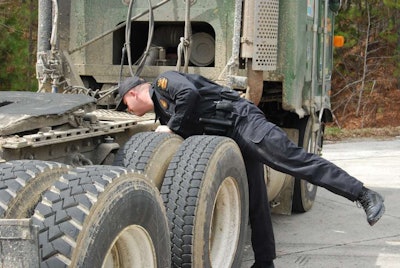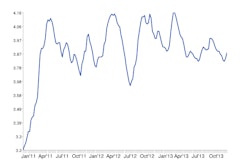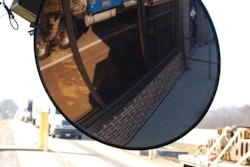
Jeff Davis, principal with Fleet Safety Services, updated CCJ Fall 2013 Symposium attendees today on the latest CSA developments, emphasizing several critical points he said fleets must be aware of as they operate in today’s environment.
To begin with, Davis said a 60-day public comment period on CSA’s new website began November 1, and urged all concerned fleets to review the site and offer commentary to improve it.
Davis also noted that the public access component to CSA is now gaining steam rapidly. Many customers are beginning to review carrier scores online and hire — or fire — fleets according to what they see there.
CSA is forcing fleets not only to focus on improvements in driver behavior and maintenance practices, Davis notes, but in all areas of fleet operations.
“Today, under CSA, it is absolutely vital that you demand the same level of excellence from you office staff and their operations as you do from your drivers and maintenance personnel,” Davis notes.
As a case in point, he related an experience on of his clients recently had with a DOT audit. The fleet was required to perform 81 drug tests to score a “satisfactory” rating in that BASIC. And, the fleet had, in fact, performed the required number of drug tests. Unfortunately, however, the fleet’s office staff could only produce paperwork documenting 80 of those tests.
“They didn’t have the paperwork for one test,” Davis stressed. “The situation was corrected immediately. But they were still hit with an ‘unsatisfactory triangle’ that they were forced to carry around for 12 months before it was updated.”
That fleet’s problems didn’t end there, either, Davis noted. Its biggest customer is a pharmaceutical company. They were not pleased to see their carrier was apparently lax on drug enforcement and several meetings took place to reassure that customer that this was a bureaucratic error that had been fixed.

In the real world, Davis said that drivers are having the hardest time with CSA because now the law enforcement spotlight shines to brightly upon them. “Fully two-thirds of all roadside inspections are triggered by driver behavior,” Davis stressed. “One-third of them are triggered by traffic violations such as speeding or improper lane changes. Another one-third are triggered by failure to wear a seat belt. What drivers and fleets both have to understand is that this behavior is essentially putting a welcome mat out and inviting law enforcement officials in. And the odds are they’re going to find something — most often it will be an improperly kept logbook.”
For Davis, this means that controlling performance on the highway is the key today to avoiding unnaturally high CSA scores. “Fleets have to learn the keys to avoid getting in inspections. They must work to control speeding and other observable defects and actions.”
The drivers are the crucial to this approach, Davis says. But unfortunately, they are the ones having the hardest time adapting to the new rules. “Drivers now are being forced to conform to a system that is foreign to them,” he says. “Many of them feel violated and picked-on by these new rules. My advice is to gentle and patient with them and retrain them to the fullest extent you are able to. If you’re operating in CSA today, you should always keep your drivers in mind to be successful.”











